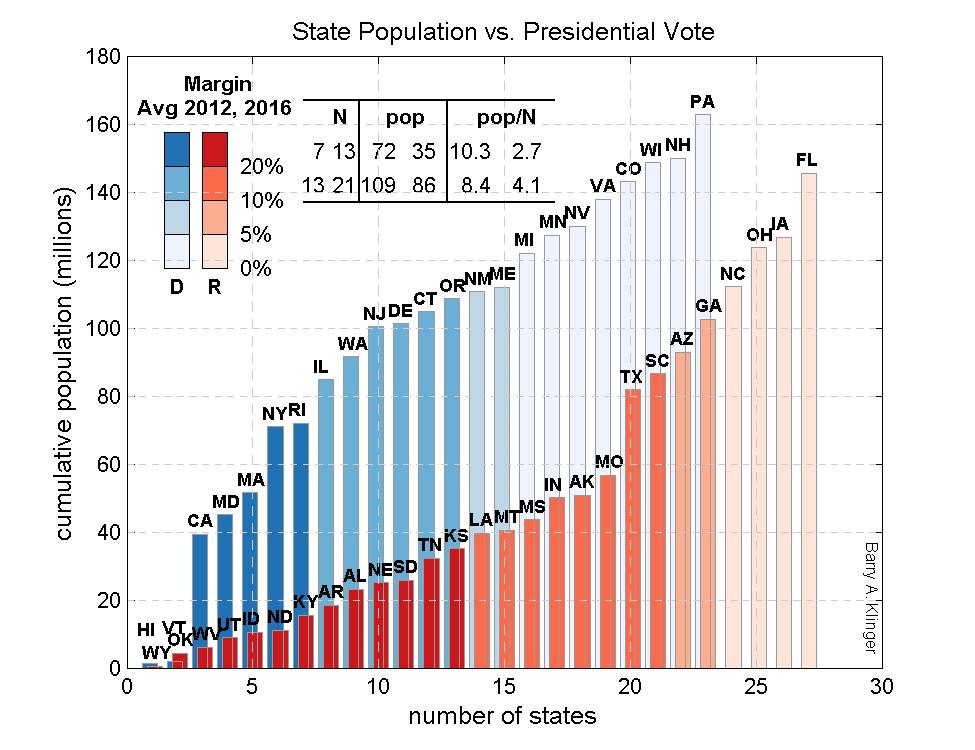
Senators representing the 600,000 inhabitants of Wyoming have the same number of votes as the senators representing the 37 million in California, because the United States Senate gives every state two senators. This is meant to protect small states from the power of big states wielded in the House of Representatives. Since many of the sparsely populated states have voted Republican recently, how much does the Senate representation disadvantage Democrats?

We can examine this by comparing populations of Republican-leaning and Democratic-leaning states. I use voting records to score each state on its partisan tilt towards either party. In the figure above, the states in each group are arranged from most partisan to least. The bar for each state represents the total population of that state and the other more partisan ones. Thus the 39 million people listed under California includes the combined population of the three most Democratic states: Hawaii, Vermont, and California. The 50 million Massachusetts bar adds its population along with that of Maryland. Thus the bars measure the population of the most partisan states. They are shaded (blue for Democratic, red for Republican) so that darkest colors represents the most partisan states.
The most partisan category includes 7 Democratic states comprising 70 million people, and 13 Republican states with 35 million people. Thus the Democratic states have more people and fewer Senators. The most Democratic states have an average of 10.3 million people per state while the most Republican ones have an average of 2.7 million per state. In other words, each senator from the most Democratic states represents about four times as many people as each from the most Republican states.
Including a broader group of partisan states, the numbers are somewhat more equal (see table imbedded in figure). Still the Democratic states have over twice the people per senator as the Republican states.
To measure party affinity I use the average of the percentage vote margins in the 2012 and 2016 presidential elections. I define the category of most partisan states to include those in which the winning candidates beat the other candidates by over 20%. The next category includes states with a margin of over 10%; not as extreme but still a large lead. The 10% and 20% benchmarks are somewhat arbitrary but other values would give similar answers. One could also choose other measures of partisanship such as Congressional representation, but the Presidential one gives a simple portrait of how many voters prefer each party.
With the current distribution of voters, the relative strength of small states in the Senate gives the Republicans a big advantage. As with the two recent presidential elections with popular and electoral votes going to different parties, it points to the Democrats' need to do better in rural states if they are to win a Senate majority in the future.